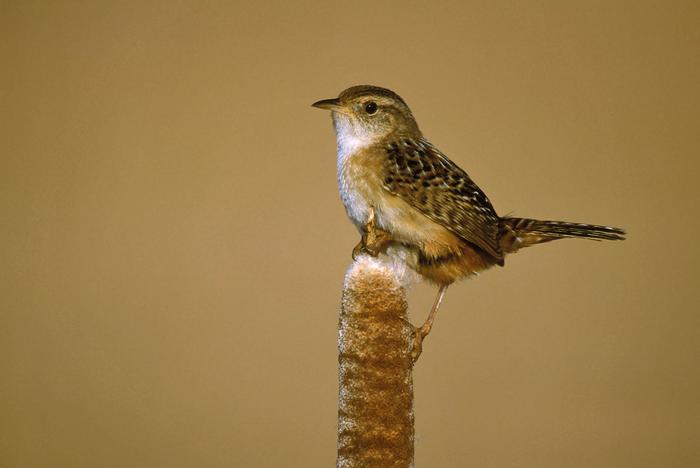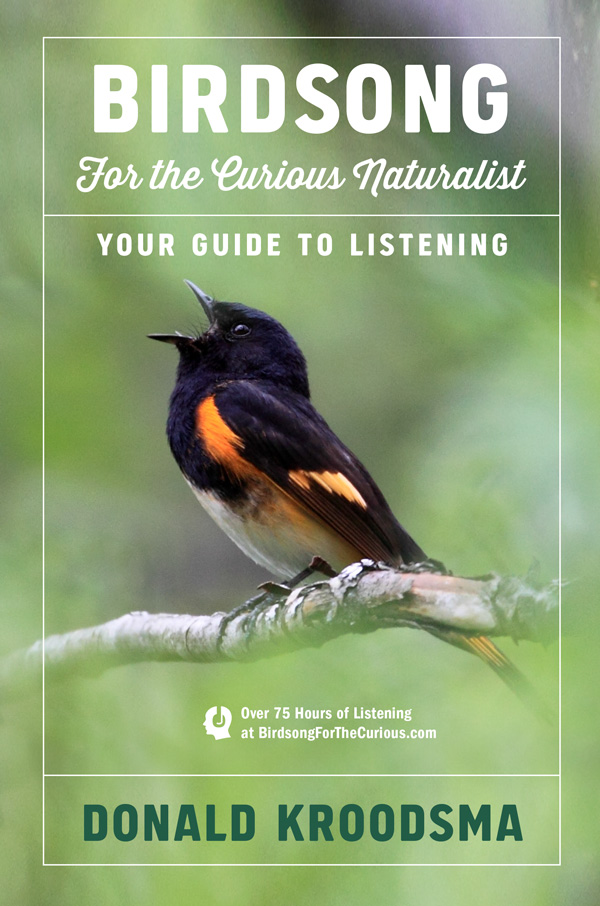Sedge wren
Chapter 8: How Songs Change over Space and Time
Subchapter: Each species has its own song
From page 144 in the book.

Photo by Brian E. Small
♫586. Typical songs of the North American "species" of the sedge wren. Hear the switch to a new song at 1:00? At 2:14? That's a new song tacked onto the end as well (at 3:40), after the calling red-winged blackbirds (hear the call matching among the blackbirds?). May 23, 2004. Sebree, Kentucky. (3:43)
♫587. How different those songs are from the songs I head in Brazil! What's more, the birds in Brazil learn their songs and match each other during countersinging exchanges, so different from how sedge wrens behave in North America. In this recording, hear one male deliver a song and then almost immediately his neighbor answers with the identical song. Six consecutive matches can be heard, beginning at 0:03, 0:05, 0:08, 0:11, 0:14, and 0:16. January 18, 1994. Brasilia National Park, Brasilia, Brazil. (0:24)
♫588. A brief sample of songs from Costa Rica, with a female calling nearby. These male "sedge wrens" in Costa Rica also learn their songs. July 20, 1997. Coris, Costa Rica. (0:29)
♫589. Resident Falkland Islands birds also imitate songs. In the background is a "jackass penguin," not a donkey. Throughout the Americas, it would seem that many different "species" of sedge wren can be found. February 15, 1996. Kidney Island, Falkland Islands. (0:27)
